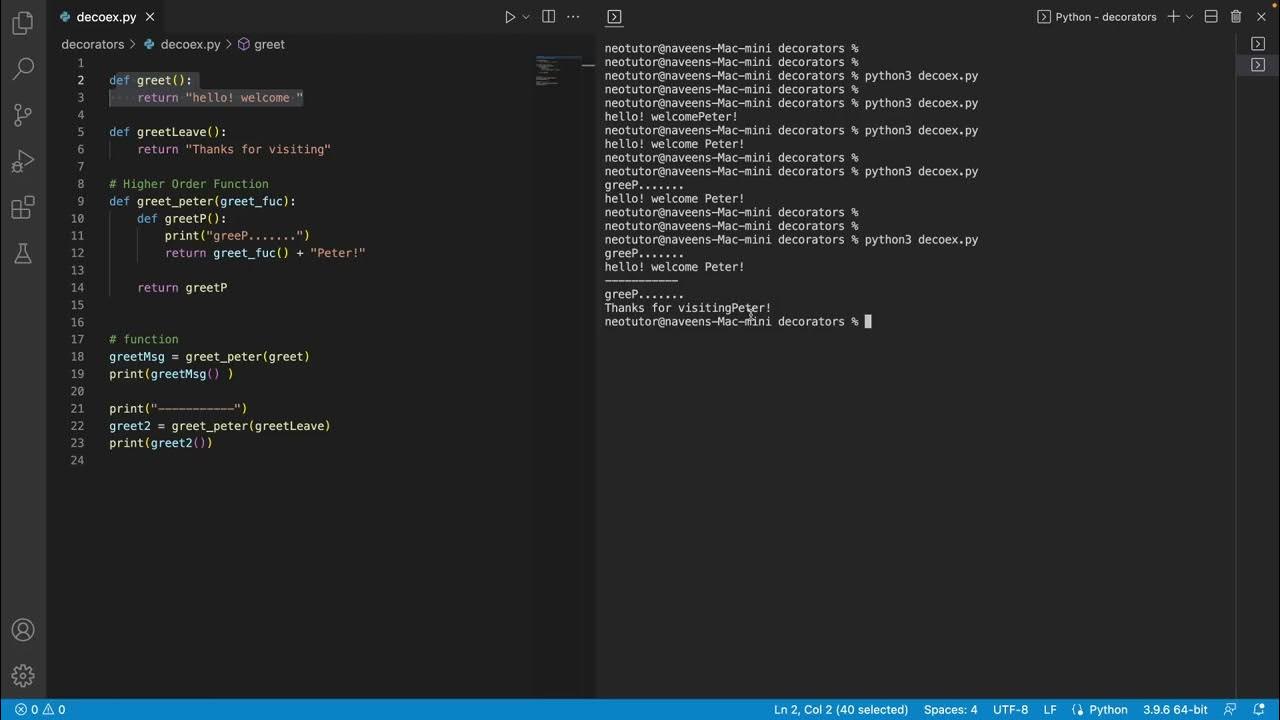Why Use Decorators in Programming: Unlock the Mystery

Why Use Decorators in Programming: Unlock the Mystery

When you delve into the world of programming, especially in languages like Python, Java, or C#, you'll often come across a term that sounds intriguing yet confusing for newcomers: decorators. What exactly are decorators, and why should you use them? This post aims to demystify decorators, explain their utility, and show how they can enhance your code in various ways.
What Are Decorators?

Decorators are functions or classes that modify the behavior of other functions or classes without permanently changing their source code. They are a design pattern that allows for the addition of behavior to objects dynamically. Here’s a simple example in Python:
```python def my_decorator(func): def wrapper(): print("Something is happening before the function is called.") func() print("Something is happening after the function is called.") return wrapper @my_decorator def say_hello(): print("Hello!") say_hello() ```This example will output:
- Something is happening before the function is called.
- Hello!
- Something is happening after the function is called.
🚩 Note: In Python, the @ symbol is used to apply a decorator to a function or class.
Benefits of Using Decorators

Code Reusability

Decorators help in reducing code duplication by allowing developers to define reusable pieces of functionality. Instead of rewriting similar code throughout your project, you can create a decorator once and apply it where needed.
Modularity and Separation of Concerns

With decorators, you can separate cross-cutting concerns like logging, authentication, or timing from the main functionality of your code. This separation promotes cleaner, more modular code.
Maintainability

Updating functionality is easier when using decorators. If you need to change how logging is performed, for instance, you modify the decorator rather than every function that includes logging.
Readability

By applying decorators, the core functionality of your functions or methods remains clear and concise. The added behavior is abstracted away, making your code easier to understand at a glance.
Creating Middleware

In web frameworks, decorators are often used to handle middleware functionality such as authentication or rate limiting. They act as a middleware layer to intercept requests or responses, enhancing the functionality of routes or handlers without altering them directly.
Implementing Decorators

Let's look at a practical example where decorators can be used for logging function calls:
def log_function_call(func):
def wrapper(*args, kwargs):
print(f"Calling {func.__name__}()")
return func(*args, kwargs)
return wrapper
@log_function_call
def do_something():
print("Doing something...")
return None
do_something()
The output would be:
- Calling do_something()
- Doing something...
Advanced Uses of Decorators

Class Decorators

Decorators can also be applied to classes to add or modify methods. Here’s how you might modify a class method in Python:
def singleton(cls):
instances = {}
def get_instance(*args, kwargs):
if cls not in instances:
instances[cls] = cls(*args, kwargs)
return instances[cls]
return get_instance
@singleton
class MyClass:
def __init__(self, x):
self.x = x
def display(self):
print(f"X is {self.x}")
a = MyClass(10)
b = MyClass(20)
print(a is b) # True, both references to the same instance
Stacked Decorators

You can stack decorators on top of each other. Here’s an example where multiple decorators modify function behavior:
def decor1(func):
def wrapper():
print("Decorator 1")
func()
return wrapper
def decor2(func):
def wrapper():
print("Decorator 2")
func()
return wrapper
@decor2
@decor1
def say_hi():
print("Hi!")
say_hi()
This will execute decorators in reverse order:
- Decorator 2
- Decorator 1
- Hi!
📌 Note: Decorators are evaluated from bottom to top, meaning @decor2 is applied first.
Best Practices with Decorators

- Use Sensibly: Don’t overuse decorators, as they can make your code less transparent if not properly documented.
- Document Decorators: Always provide clear documentation about what a decorator does, especially in libraries or shared codebases.
- Maintain Function Metadata: Preserve the original function's metadata using tools like
functools.wrapsin Python to avoid losing information like the function's name, docstring, etc. - Testing: Write unit tests that cover how decorators interact with your functions or classes.
Wrapping Up

In sum, decorators are an elegant solution for adding functionality to your code without altering its core structure. They promote code reusability, separation of concerns, and maintainability. By understanding and effectively using decorators, you unlock the ability to write more flexible, maintainable, and efficient code. Whether you’re adding simple logging or complex middleware behaviors, decorators prove to be an invaluable tool in any programmer’s toolkit.
What is the main advantage of using decorators?

+
The primary advantage of using decorators is the ability to add functionality to code in a way that is modular and doesn’t require modifying the original code, thereby maintaining clarity and modularity.
Can decorators slow down my code?

+
Yes, decorators can introduce a small amount of overhead because they wrap the original function or class. However, for most applications, this overhead is negligible. If performance is critical, consider the decorator’s implementation carefully.
Are decorators limited to Python?

+
No, the concept of decorators exists in many programming languages, though their syntax and implementation might differ. For example, Java uses annotations, C# has attributes, and JavaScript also uses decorators in some modern environments.



